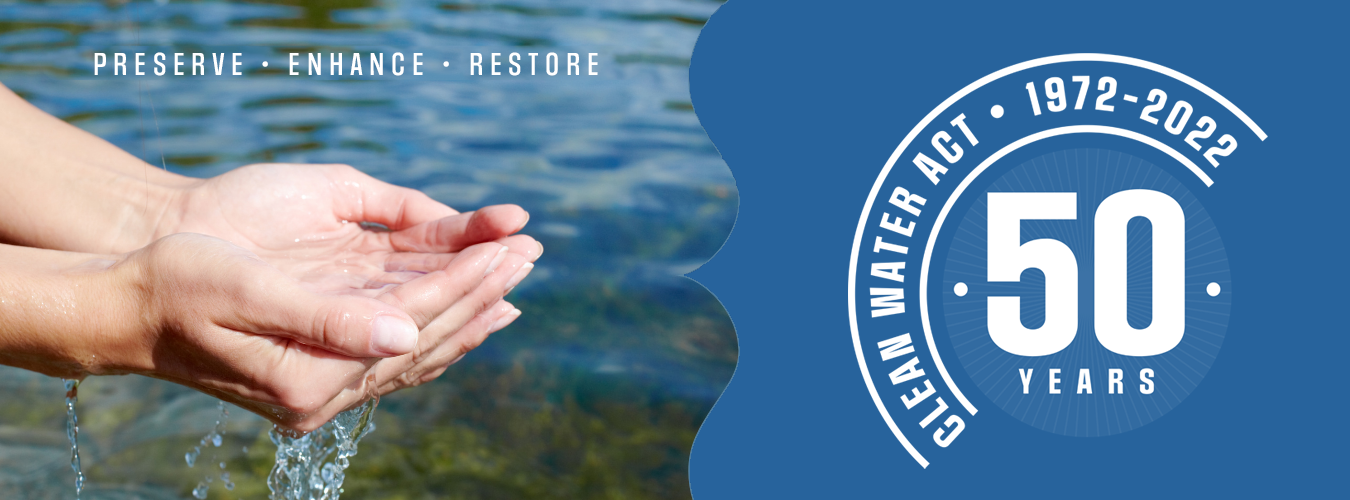
Clean Water Act - Celebrating 50 Years
2022 marks the 50th anniversary of the Clean Water Act, the 20th century’s landmark water protection legislation. The Clean Water Act (CWA) establishes the basic structure for regulating pollution in U.S. waters. It gives Americans a right to waterways that are clean, biologically intact, and safe for use, and includes an array of protections and programs to reach that goal.
The CWA is an important tool for the Water Boards to preserve, enhance, and restore the quality of California’s water resources on behalf of Californians. Under the CWA and the Porter-Cologne Water Quality Control Act, the California Water Boards have regulatory responsibility for protecting the water quality of nearly 1.6 million acres of lakes, 1.3 million acres of bays and estuaries, 211,000 miles of rivers and streams, and 1,100 miles of coastline. We achieve this through our:
- Surface Water Quality Assessment Program, which establishes designated water uses, sets water quality criteria to protect those uses, and develops antidegradation planning to keep waters clean and to protect existing uses.
- Non-Point Source Pollution Control Program, which minimizes pollution from agriculture, urban development, forestry, recreational boating and other activities when pollutants are picked up and carried by water travelling over land.
- National Pollutant Discharge Elimination System Program, which regulates discharge into waters from point sources of pollution such as wastewater treatment plants, industrial facilities, concentrated animal feeding operations, and stormwater systems.
- Clean Water State Revolving Fund Program, which offers low-cost financing for a wide variety of projects to preserve, enhance, and restore the quality of California's water resources.
Clean Water Act Success Stories
Arcata Marsh and Wildlife Sanctuary
The Arcata Marsh and Wildlife Sanctuary, located on the edge of Humboldt Bay, is home to the City of Arcata’s wastewater treatment facility which uses oxidation ponds and freshwater marshes to treat wastewater using bacteria, plants and sunlight. Covering more than 300 acres, the treatment marshes don’t just clean the city’s wastewater, they also provide scenic bike paths, hiking trails, and refuge for 300 species of birds.
Read More about this success storyMono Lake
Mono Lake, and its tributaries, might look much drier than it does today, if not for the Clean Water Act. The lake is in Mono County, bordering Nevada in eastern central California. It takes its name from a Native American Paiute tribe and serves as a vital habitat for millions of migratory and nesting birds. The fact that Mono Lake has a current water level of 6379 feet above sea level, to protect its ecological health, owes much to the landmark Clean Water Act (CWA) of 1972.
Read More about this success storySan Diego Bay
San Diego Bay San Diego Bay, one of the most striking natural harbors in the United States, spans 12 miles of scenic coastline and is an invaluable resource for California’s southern-most metropolitan region. Besides providing habitat for fish and wildlife, commercial, industrial, and maritime economic benefits, and maintaining a role in national defense with three military bases, the bay’s beauty is a magnet for tourism and business conventions.
Read More about this success story

